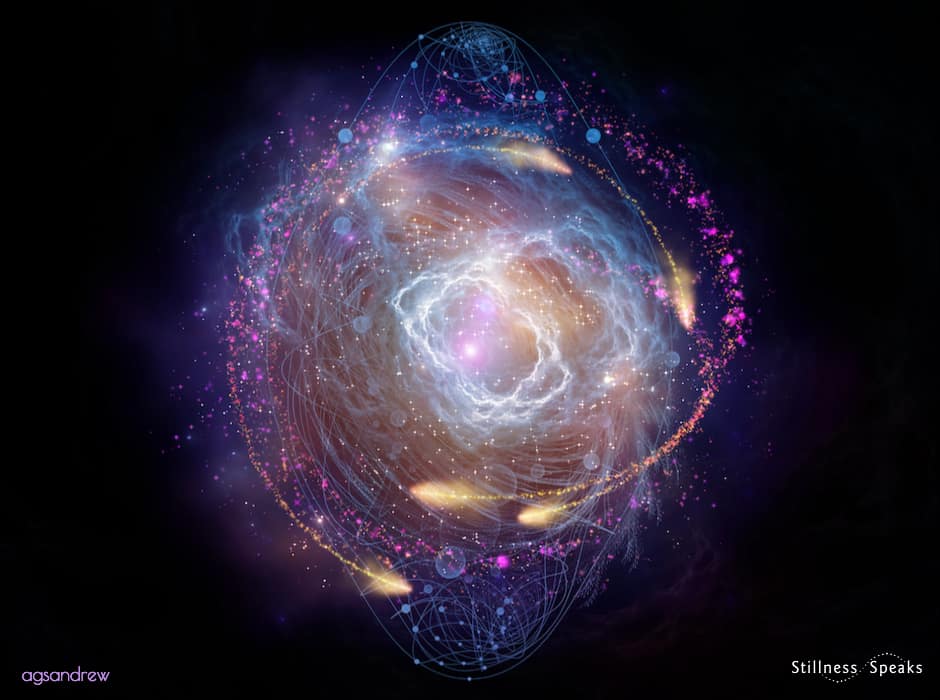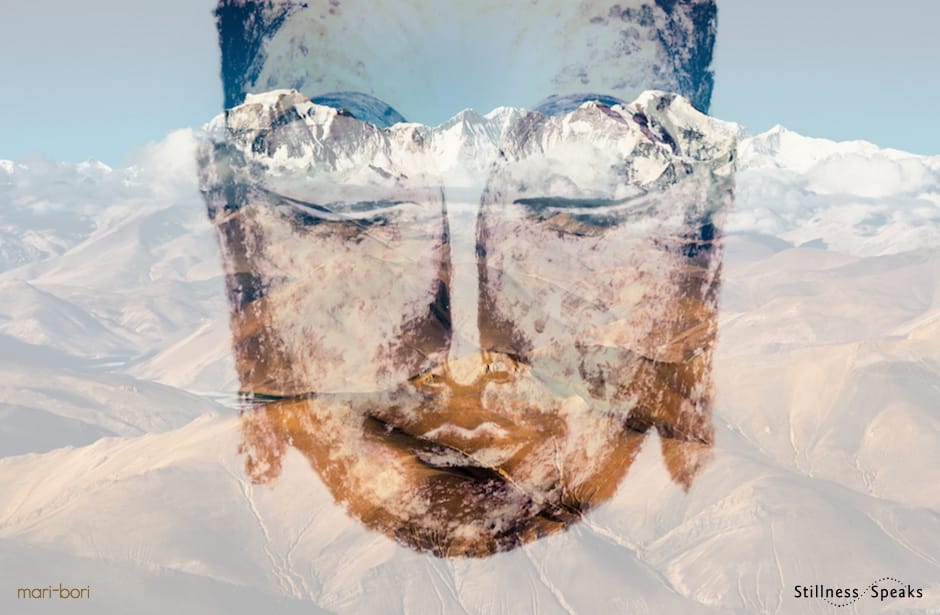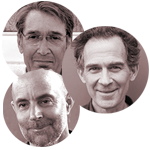One Blade of Grass: “… I long to sit long hours while the thing that has been born grows stronger. I am fully awake yet don’t know who I am. A fuse has blown, there is only silence …” ~ Henry Shukman
“How Zen led one man to awareness of the miraculous . . . A graceful, insightful, and disarmingly candid memoir . . . Zen, Shukman writes, teaches not to withdraw but to accept life, pain, suffering, and beauty: ‘Unless a path leads us back into the world―reincarnates us, as it were―it’s not a complete path.’ Shukman now leads his own Zen center in New Mexico. A vibrant chronicle of a profound spiritual journey.” ~ Kirkus Reviews from the Amazon page for Henry Shukman’s book Zen memoir: One Blade of Grass: finding the old read of the heart
Indeed, through Henry’s personal stories – that are eminently readable – we get to find the profound insights of Zen and how they can lead one to living a gentler, kinder, and more fulfilling life. He casts Zen in a simple language and shows “… how it can work in normal life …” … and even more importantly he conveys “… why it matters …” and equally importantly, why others’ life {stories} can be “… healed through meditation practice …” stories that are like his own “… tale of everyday desperation …” …
This 4-part series is a glimpse into this zen memoir … into finding the old road of the heart … through several chapters: Prologue, Sweet Obedience, and Epilogue.
One Blade of Grass is listed in our book library and can be purchased on Amazon by clicking here. Unless otherwise noted, all text below is directly excerpted from Henry’s book and published here with his permission
We begin with this sample …

But what had I really been doing during all these years of practice? Through the simplicity of being still and quiet, something had been growing. Every now and then it showed itself, then withdrew again. A beast, sure enough, burgeoning within, the ox of Zen’s famous Oxherding Pictures. Finally it sloughed off the sleeve of self and world. In the weak daylight of England the true ox arrived, and it wasn’t going away.
I wrote to John (note: Henry’s teacher John Gaynor):
The world has turned back to front, inside out, upside down. Things I had thought bad are not bad, and things I’d thought good aren’t good either. I realized I have never know people I’ve know for years.
I long to sit long hours while the thing that has been born grows stronger. I am fully awake yet don’t know who I am. A fuse has blown, there is only silence.
I feel so grateful to my parents… to Clare and the boys… to you … A long childhood has finally ended, and new one has begun….
Thank you, thank you.
Above text is an excerpt from Henry’s book posted as Message from Henry – Fully Awake on Mountain Cloud Zen Center’s website … and is published here with his permission.
But before we go further …
As we’ve done since the emergence of the “COVID norm” …. we’d like to commend Go Fund Me for continuing to organize various pertinent campaigns addressing the current urgent needs. All of these campaigns are worthy of our attention … but for now we are highlighting TWO critical ones that we are supporting personally and also as Stillness Speaks (through donations):
We are all facing financial challenges but IF your situation allows you to donate and help then …
… please visit Frontline Responders Fund’s Go Fund Me page … and help deliver crucial supplies to the frontline responders …
… and/or visit America’s Food Fund Go Fund Me page and help feed the neighbors in need …
And, we again, express our deepest gratitude to 1) the COVID-19 Frontline Responders (all the healthcare professionals – doctors, nurses, hospital/medical-services staff – firefighters, law enforcement, volunteers, and any/all the people involved in keeping the “system-at-large” functioning for ALL of us) … and 2) Go Fund Me for organizing such campaigns …
THANK YOU – our lives would not be possible without your dedication.
Also ..
Currently, all our lives – across the planet – are deeply (even irrevocably?) impacted by COVID … so we consciously temper these posts with the pandemic … and in that spirit we want to share a segment of Henry’s interview for the Albuquerque Journal North by Monica Gagnier. This segment is Henry’s response to her final question. The full article was published on Sunday April 19, 2020.
Question: Do you think the coronavirus will bring more people to a spiritual way of life, whatever that may be?
Henry: I surely hope that everything we experience will collectively bring us to wiser, kinder ways of living, not just individually, but as a whole society. We have obviously reached a point in the human story where the major challenges facing us are not nation-based; they are world- based.
The time for division is over. We have to come together to heal the grievous wounds
of this world and to cease creating more wounds. I doubt that coronavirus in itself can turn around our collectively heedless modern ways, but maybe it will give us all a little pause.I find my practice repeatedly calls me back to the uncertainty of things, and the pandemic has surely raised people’s awareness of uncertainty.
There is a zen koan where a master says: “Not knowing is most intimate.” Maybe feeling less certain can be a good thing, even if it is uncomfortable. Perhaps it can even be a gateway to a deeper way of living.
If you are a subscriber, you can read the full article on the Journal North website.
Now, back to One Blade of Grass … we begin with the Prologue where Henry “sets the stage” … of this very fluid and engaging reading …
Below are some highlights … click here for the full Prologue …
It was the third or fourth night of the retreat. Rain was lashing down, pinging against the dark windows and sometimes clattering as if a handful of shingle had been thrown at the panes …
… An intense energy was moving all through me and through the world, and I could feel tears streaming down my face—tears of love, of joy, of gratitude. It was true, as the Buddhists said: I was one with the world. I was one with everything. The whole world was my body, my mind. And because of that, I was beloved, I belonged, I was healed in all possible ways. All had been well, secretly well, all along.
The bell rang for the end of the period, and things quietened down and became normal again, except that I was left with a tingling sensation in my limbs and a sense of great spaciousness, as if my mind had been extinguished and replaced by a boundless peace.
… You can get this impression in the world of meditation: people go in ordinary; then something happens in the middle, inscrutable, ineffable, not castable in language mere mortals can grasp; then they reemerge new, different, “done.”
…. This book hopes to demystify the cooking process, to cast it in ordinary language, and to show how it can work in normal life. And to convey why it matters. For even though we may continue to lead ordinary lives, it offers the possibility of a change in the way we experience them that is not at all ordinary. Some claim it is the most radical thing we can do for ourselves and our fellow beings. After all, it can show us that … we are all part of one single existence. If this is right, the implications are mind-boggling.
… This book is about how I found a path when I didn’t even know I was looking for one. For a long time I didn’t know where I wanted to be; I just knew I wasn’t there.
I tell this story not because it holds any special interest. Far from it; my challenges have been unremarkable. It’s a tale of everyday desperation, such as many know, that healed through meditation practice. That’s why I hope it may be helpful: to show that the practice can steer and jolt even a common dolt into kinder, better ways of living, without divine intervention though with moments of grace.
It’s also for people who have lived a long time with indeterminate unease, inwardly taking up residence at a fork in the road, following neither the more nor the less traveled path. … But inside we know there is more. We sense a more real investment of our powers still waiting.
Next we look at Koan Magic: Sweet Obedience … where Henry continues with his personal stories that show the ongoing deepening of his relationship with Zen during the early part of his journey – including the ensuing doubts and questions that mark such a journey … with him recognizing the valuable role of a Zen teacher (directly experienced through his teacher at the time – John Gaynor) and the gift of koans: how koans and an authentic koan teacher can help with navigating spontaneous awakening experiences “… integrating the experience, and living it out in an ordinary life, in kindness, in concern not for self but for others.”
Below are some highlights, for the full post please visit Koan Magic: Sweet Obedience
… In the room, everything is bathed in rich light, a dark, lucent limpidity drenching the bed, the window, the TV, the three other people sprawled on it.
Giddy, dizzy, I totter downstairs with my untouched plate, delirious with joy, feeling like any moment I might topple into the abyss and not caring. How is it even possible to take a step, to be suspended on this imaginary surface called the floor? It’s all a dream, a floating illusion, a mirage-like reflection, a ghost of something on nothing.
… I let myself out and go for a walk around the dusky neighborhood. Billows of smoky energy seethe everywhere. The houses hang still and quiet in the gray-blue dusk. They, too, are smoky and alive, poised between being there and not being there. The mind is a wisp of smoke, the remains of a blown-out candle. Not just the houses but the seeing of the houses is the same: there and not there. I could go up and knock on their doors, tap on their windows, but “being there” isn’t what it seems. The world “out there” is a reflection quivering on nothing, even when you rap on a door.
Once again, everything answered and fulfilled.
… I had no answers. Only what I felt. Which was that, by some miraculous power, I had just been granted a glimpse into reality, into the true fabric of the universe—into its DNA, as it were, and what I had seen there implicated me too, so that it was clear that, like everything else, I was a child of the universe. I wasn’t separate from it.
Then he started plying me with odd questions about the koan mu. They seemed like nonsense, yet I found responses stirring in me, and when I let them out, John would smile at my ridiculousness and agree, and tell me that I had just given one of the traditional answers. I had never known anything like this, in Zen or anywhere else. So the experience had not been random. It actually had something directly to do with mu. This was what a koan was for: to bring about a radical shift in experience. The koan could offer access to an incredible new experience of the world, free of all calculation, all understanding. But more than that, I was discovering that the koan could allow you to meet: the student could come to the teacher with their “experience” and have it met. And they themselves could be met, right in the midst of what they had awakened to.
After a number of interviews like this over the following weeks, John gave me a new koan, the famous one: “You know the sound of two hands clapping; what is the sound of one hand?” It was the best thing: a way of not just confirming and growing confident in the experience, but sharing it. It was what I had been crying out for, for decades: to meet someone in this reality. This was the magic of the koans. They didn’t just open us up; they offered a way to the most intimate kind of meeting.
But it went even further: an authentic koan teacher could lead you deeper. Only through the meeting, the sharing, the guidance was there hope of integrating the experience, and living it out in an ordinary life, in kindness, in concern not for self but for others.
Next, we conclude the chapter titled Sweet Obedience … where Henry continues with the deepening of koan integration in his life and practice … and the ongoing value of an authentic koan teacher like John Gaynor.
Below are some highlights, for the full post please visit Sweet Obedience: Conclusion
…you either throw this book across the room or else one day go and find a Zen teacher, learn to meditate, pick up a koan, and see what happens. That’s the traditional advice: it’s about personal experience. Our own, not anyone else’s.
It’s relatively easy to think this through these days, with the most lax, lay knowledge of modern physics: like everything else, we’re made of atoms and their constituent parts and energies. It seems a wild claim to suggest that we are capable of experiencing things on that level, yet as many commentators have pointed out, there are striking resemblances between some aspects of modern physics and what Buddhism has been saying for thousands of years: things are “empty,” lacking in the solidity so convincing to us; if you really track substance down, you end up with energy and space: that’s what the physicists say.
… There were several “first koans” to work through. One of them was about a “distant temple bell.”
… The koan about the distant bell is pivotal, in that it’s the first of the major “presentation” koans, meaning a koan where no amount of discussion will help. The student has to come up with a wordless “presentation” of the koan, to show it, embody it, be it. It’s no use talking about it. The whole thrust of koan study is away from language into liberation from language. The great silence of all things opens up, where words are just flotsam and jetsam.
I sat with the koan about the bell for quite a few weeks. Already the recent experience was turning itself into a metaphysical understanding in my mind, and that held me up with the new koan. Had John not been there, had he not known so instinctively how to work with me, it would probably have gone the way of the other experiences and become a troubling memory. But here he was, and he’d given me the strange koan about the bell.
“Stop the sound of the distant temple bell,” it runs. How on earth do you do that? “ There’s no place for discussion,” John kept telling me. “We have to do it. Trust the experience you had. Let it show you how.”
After several dokusan, with John probing and prodding me, finally one evening in the dokusan room, after I thought I’d exhausted every imaginable possibility, an urge came and I randomly trusted it. As soon as I did, I fell into a groove of centuries of practice worn smooth by others. I no longer cared if I was making the “right” presentation. The koan disappeared, a great expansiveness opened up, as I did what I did.
Finally, in the Epilogue … Henry summarizes his journey through seven key insights that offer a very easily understandable (and relatable) essence of Zen …
Below are some highlights, for the full post please visit Essence of Zen via Henry’s Journey
SO IS “ENLIGHTENMENT” REAL? I’ve no idea, but:
Experiences wherein space and time disappear and all is revealed as one infinite consciousness; or as utterly without form and void; or where we ourselves vanish into empty sky; or where no trace of anything, including any witness, remains—real.
Experiences that leave indelible, beneficent changes in the psyche—real.
Becoming more filled with love, more concerned for others—real.
Lasting, positive character change, meaning less aversion and anger, less craving and clinging, more ease with the arising and passing of things as we live with less domination by self-centeredness—real.
Perhaps we can claim the personality can get just a little bit better through practice, that’s all: small improvements, but they’re enough.
SO WHAT’S IT ALL BEEN about?
First, maybe Peter Matthiessen was right about “early openings”: they can cause trouble. If a seed germinates and splits open, it had better have loam waiting for it.
Second, some of us are going to need other kinds of help, along with meditation: dream therapy, cognitive therapy, somatic work, yoga, whatever it may be. The more the different approaches understand and respect one another, the better.
Third, one common misunderstanding of meditation in the West is that it’s an individual undertaking. I fell for that, and fell foul of it. In fact it’s collaborative and relational, at least if you want to make real progress.
….
Fifth, my teachers have not been Deepak Chopras or Eckhart Tolles, that is, spiritual voices who stand alone, apart from any lineage, for whom the establishment of formidable commercial empires has been part of the mission. Much as I personally appreciate those popular public teachers and their books, I’m grateful my own teachers aren’t like that. I was a lone wolf too long myself, snarling with distrust. That was part of the very problem. Considering that there are lineages of practitioners who have been studying human consciousness for millennia and passing on their findings, why not receive the wisdom of their cumulative experience? My life wasn’t “saved” by Zen, but by my teachers. They were the ones who had taken the trouble to submit themselves to Zen’s long, arduous training under their own masters so they would have something—the best thing—to offer others. And what that is doesn’t come independent of relationship. It is in a sense the core of relationship, and to present it as an isolated thing that we discover in an isolated way is to miss the most important point of all. Zen is almost nothing but communal.
~ Henry Shukman
All italicized text above is from One Blade of Grass: finding the old road of the heart by Henry Shukman and is published here with his permission.











